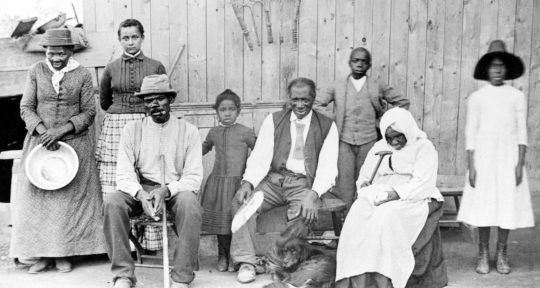West Virginia has a rich tradition of glassmaking. Thanks to its abundant deposits of the silica sand necessary to make glass, the state once saw as many as 60 glass ventures operating. Today, nearly all are gone, victims of changing technology and foreign competition. The survivors can be counted on the fingers of one hand, with a finger or two left to spare.
The largest of the surviving glassmakers is the Blenko Glass Company, located in the tiny Mountain State town of Milton. Its skilled artisans still craft colorful handmade glassware in much the same way it’s been done for more than 100 years. Blenko, a family-owned and operated company, is housed in a multi-building complex that includes a factory, offices, a warehouse, shipping facilities, and a two-story visitor center.
The gift shop, which sells both first-quality pieces and bargain-priced “seconds,” is busy year-round but especially so during summer vacation season and in the weeks leading up to the holidays. A small, second-floor museum is filled with memorabilia from Blenko’s history. It introduces visitors to the various members of the Blenko family who have steered the company over the years and to some of the designers responsible for its decorative glassware.
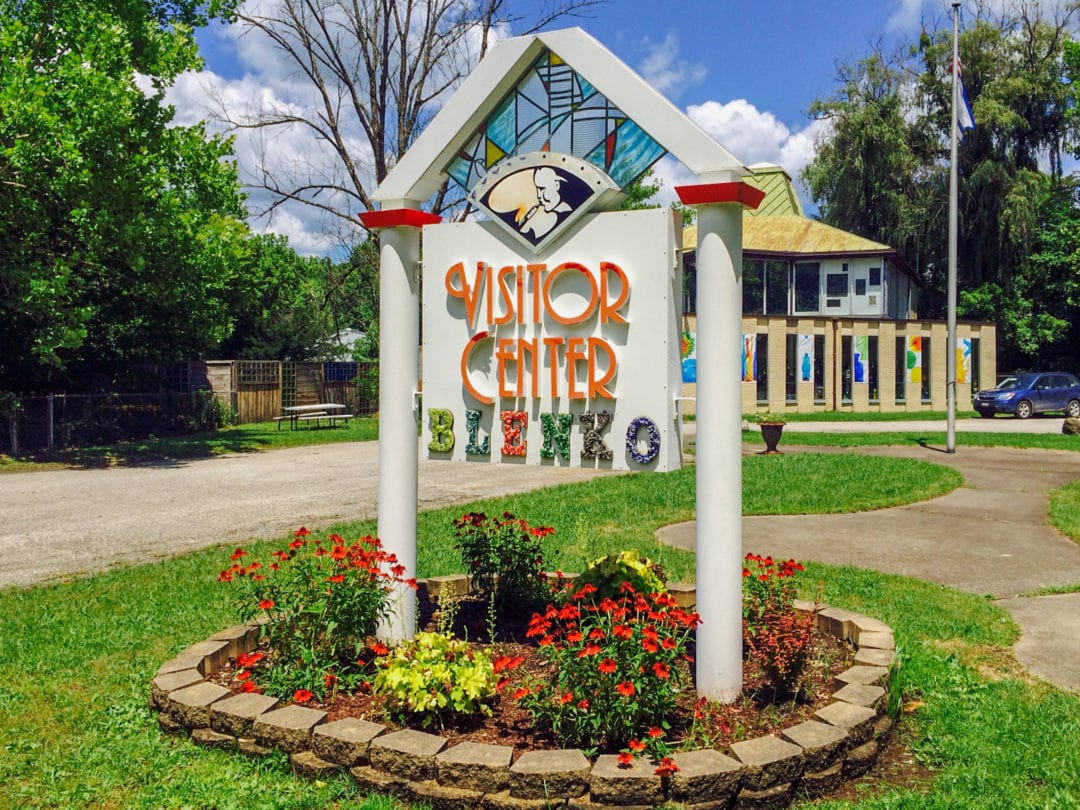
I grew up just a short drive away and have visited Blenko Glass Co. a number of times. On my most recent visit, I received a personal tour from Dean Six, Blenko’s vice president and general manager and an expert on the glass industry’s history.
Silica sand and molten glass
Blenko is a popular spot for school field trips and as I wait for Six, I hear children laughing and giggling. A seemingly endless line of students passes me on their way to the factory’s observation deck, which enables visitors to watch as molten glass is transformed into delicate works of art. A sturdy railing keeps people a safe distance away from the red-hot glass being manipulated by the factory’s workers. After handing me a pair of safety glasses to wear, Six takes me out onto the factory floor to show me the intricate art of glassmaking.
“Our glass is silica based,” he explains. “We regularly acquire tons of silica sand which we mix with soda ash, cullet—that’s recycled glass—and various chemicals.” The resulting mixture, called the “batch,” is shoveled into a hot furnace which turns it into molten glass.
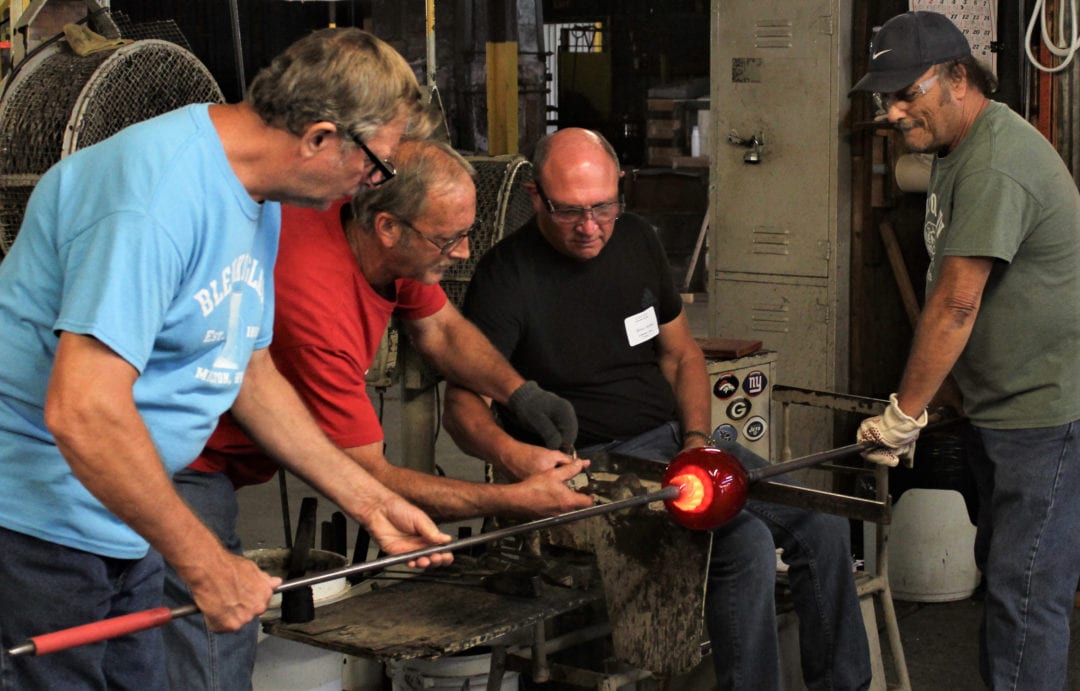
“Our eight furnaces burn 24 hours a day, day after day, year after year,” Six says. “We never turn them off. At this point, all our glass looks orange in color. Real colors become apparent as the glass cools. Color is created by adding various metals to the molten glass. For instance, blue commonly requires the use of copper and cobalt.”
I watch as a worker, called a gatherer, reaches a metal pipe into a 2,000-degree furnace and gathers just the right amount of molten glass on the end of the pipe. Next, a glass blower blows into the pipe to inflate the glass at its end. It expands much like a balloon.
“We use wood molds to guarantee shape and uniformity to the piece being blown,” Six says. “The blower is assisted by a mold boy who handles the mold, keeping it damp and opens or closes it as needed, as indicated by a slight tow tap from the blower. The two must work closely as a team. Several of our blowers have 30 or 40 years of experience working with us.”
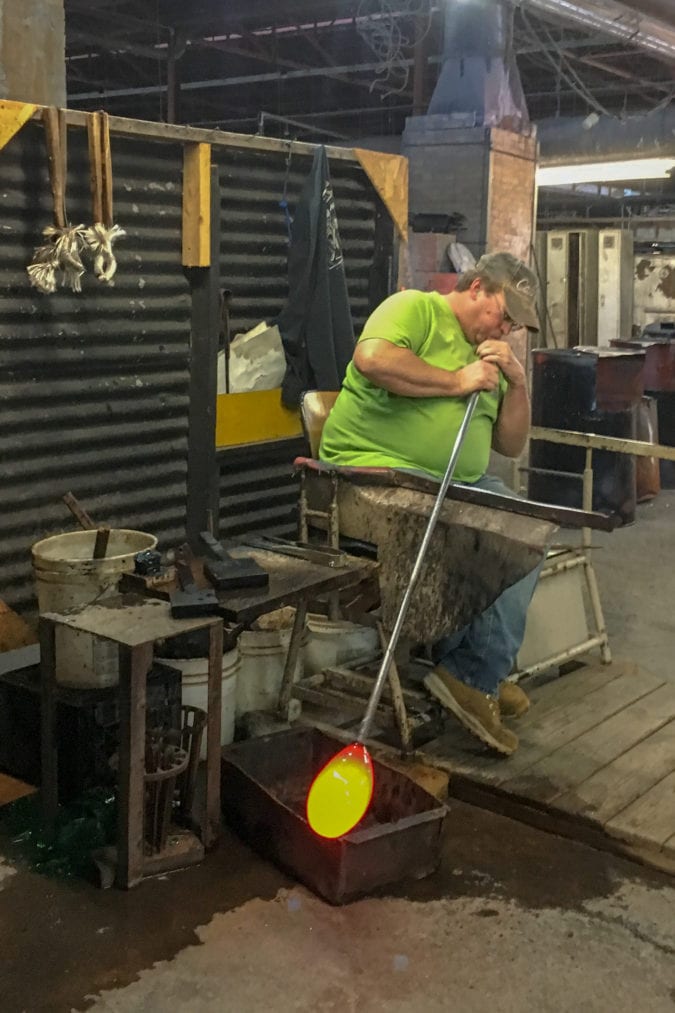
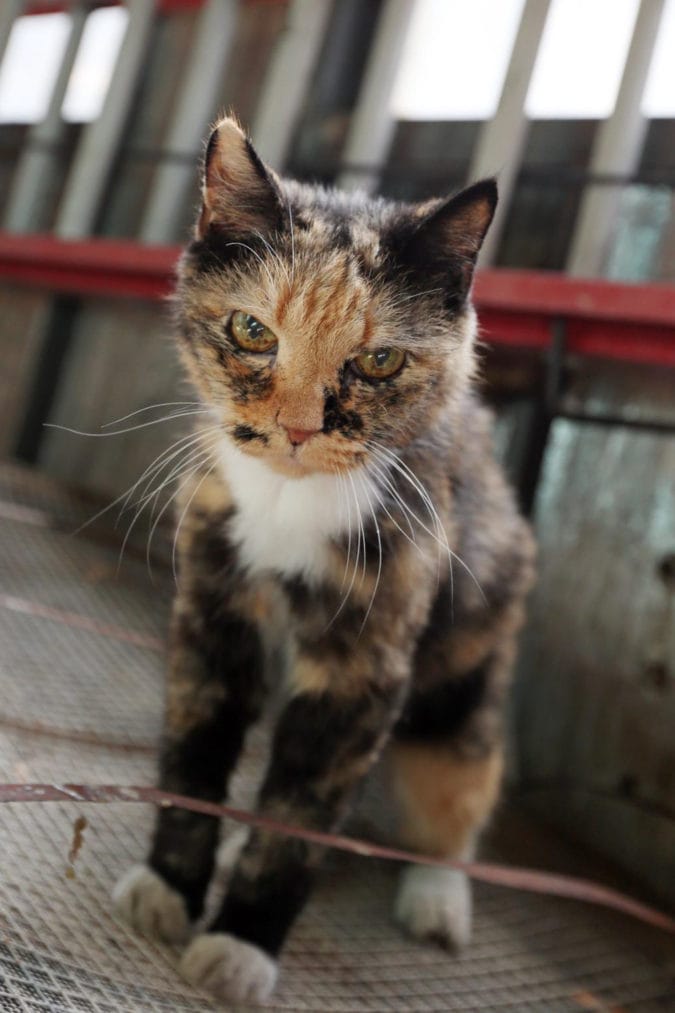
We continue around the factory floor, watching as a finisher uses hand tools to shape the final details into the cooling glass. The glass piece is still hot so it’s put on the Lehr, a cooling oven with a slow moving conveyor belt, to prevent the piece from cracking. After a final inspection, the completed piece is ready to go on sale at the gift shop or be packaged for shipment.
But not all of the Blenko employees are human—if you’re lucky, you might spot one of several cats that live in the factory and warehouse and help keep the spaces rodent-free. The company has a new coloring book featuring one of its resident cats, Kit, showing visitors around the factory and explaining how glass is made.
“Currently we have five resident cats,” Six says. “And one or two feral cats slip in for a bite of food and a drink of water from the Blenko glass bowls.”
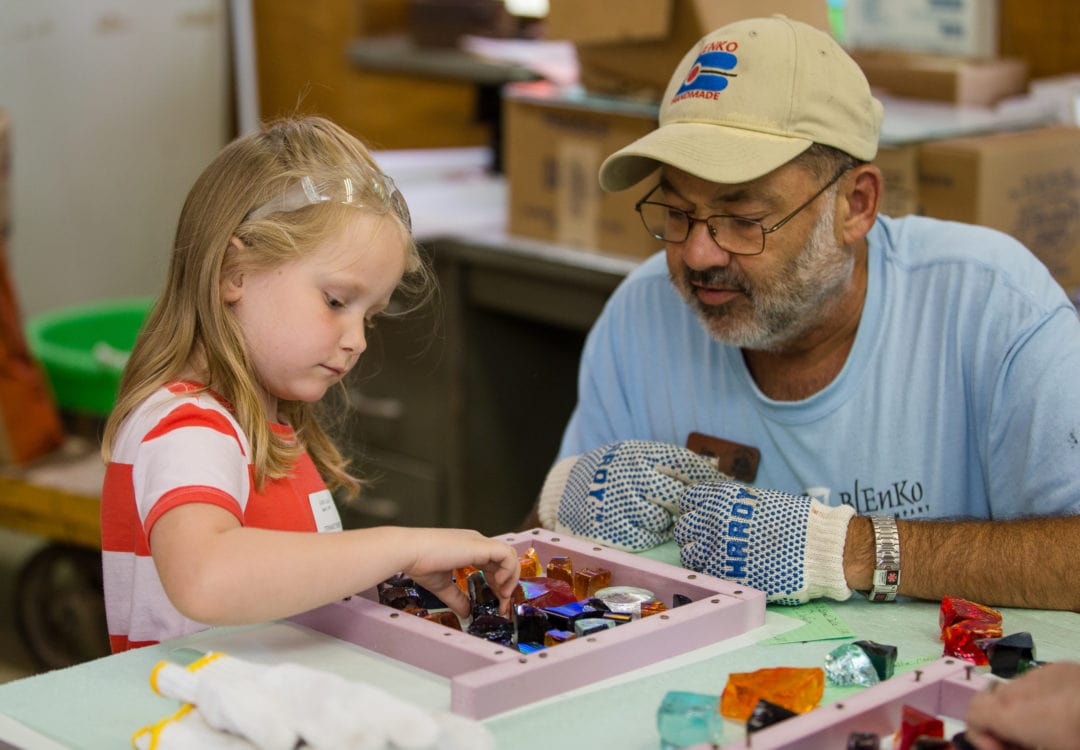
A century of glassmaking
William J. Blenko was born in London in 1854 and founded the Blenko Glass Company in 1893. He came to the United States determined to introduce stained glass production, and in 1921, he brought his company to Milton. Blenko originally made only sheet glass, but when the Depression reduced the demand for new or replacement window glass, the company began making the hand-blown decorative vases, pitchers, and other glassware for which it has become internationally known.
In 1980, Blenko began what has become a long-standing tradition when it produced a limited-edition bowl commemorating West Virginia’s 117th birthday. Only 117 of the birthday bowls were made and each year since, the company has offered a similarly limited-edition glass collectible marking the state’s birthday. They’re always quickly snapped up by collectors.
“We’re looking forward to 2021, when we will celebrate 100 years of making glass in Milton,” Six says.
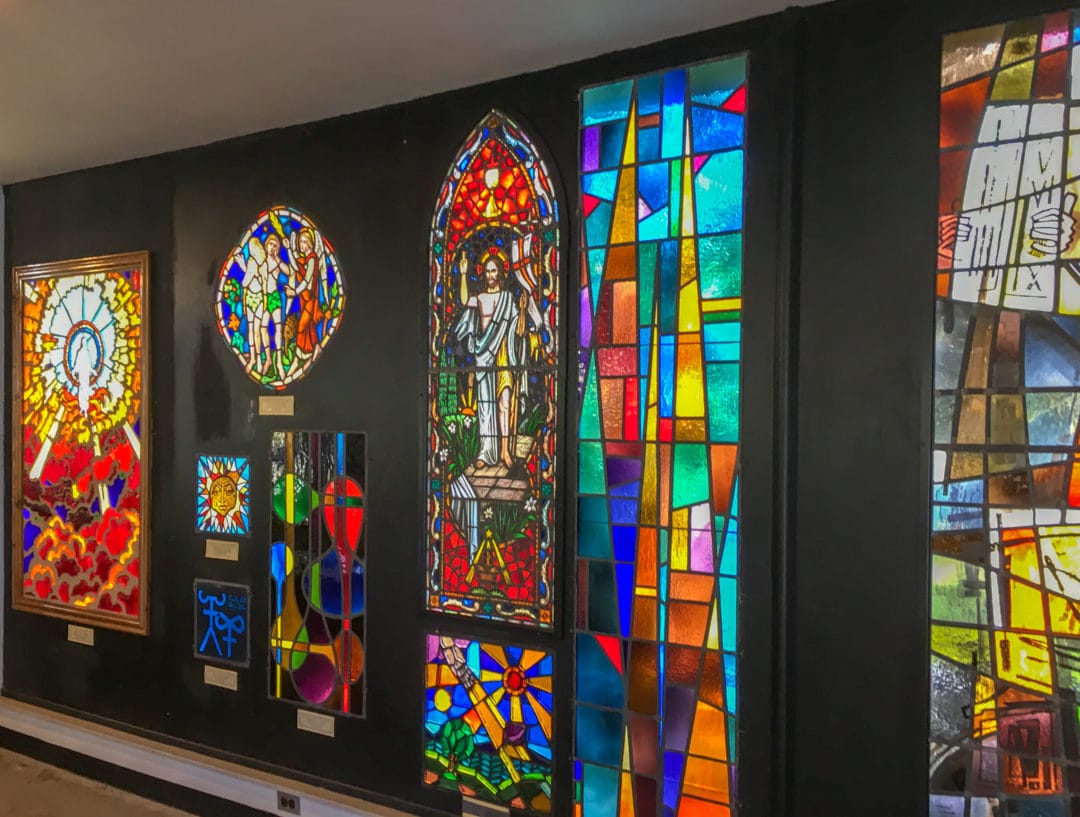
Blenko stained glass can be found at the National Cathedral in Washington, D.C., the Cathedral of Rheims in France, the chapel of the U.S. Air Force Academy in Colorado Springs, Colorado, and many other places around the world. But you don’t have to leave West Virginia to see dramatic examples of Blenko’s stained glass artistry; the company museum has several impressive pieces on display.
Several times a year, Blenko offers the public a chance to sign up for workshops that enable them to make their own small piece of glass: an ornament for their Christmas tree or, just before Halloween, a small orange pumpkin. Outside the visitor center, a “Garden of Glass,” strewn with colorful glass shards, lines the shore of a small, man-made lake.
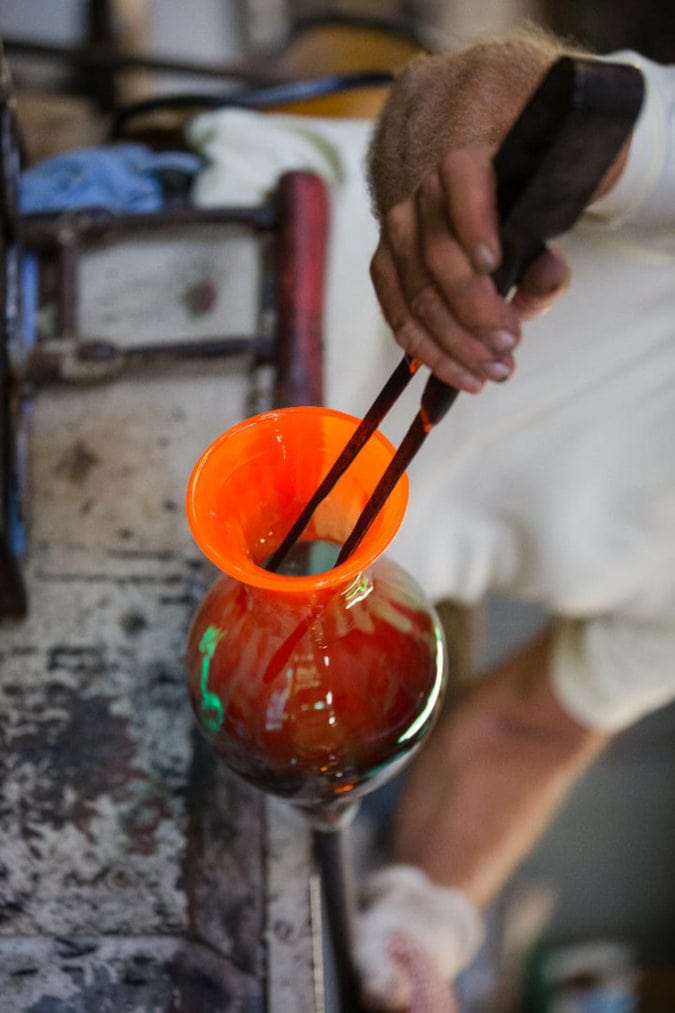
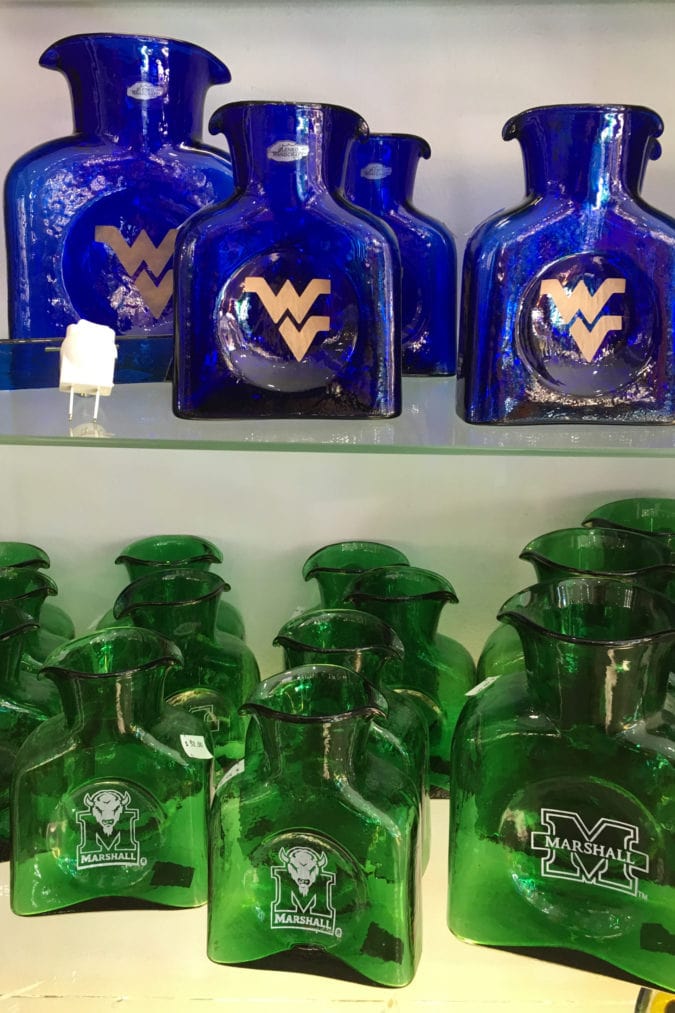
Functional and attractive
Macy’s began selling Blenko glassware in 1932, but over the years, the company has needed to adapt to changing tastes and trends. “American shoppers are changing the way they buy things,” says Six. “For years, we sold our glassware at mom-and-pop glass and gift shops and a number of leading department stores. But today, the mom-and-pops are pretty much gone and the big department stores seem headed in the same direction.”
Six notes that Blenko has long been stocked in gift shops at museums and historic sites around the country, including Mount Vernon, Monticello, Colonial Williamsburg, and the Museum of Fine Arts, Boston. But Americans are doing more and more of their buying via the internet and Six says that a growing list of merchandisers are including Blenko glassware in their online offerings.
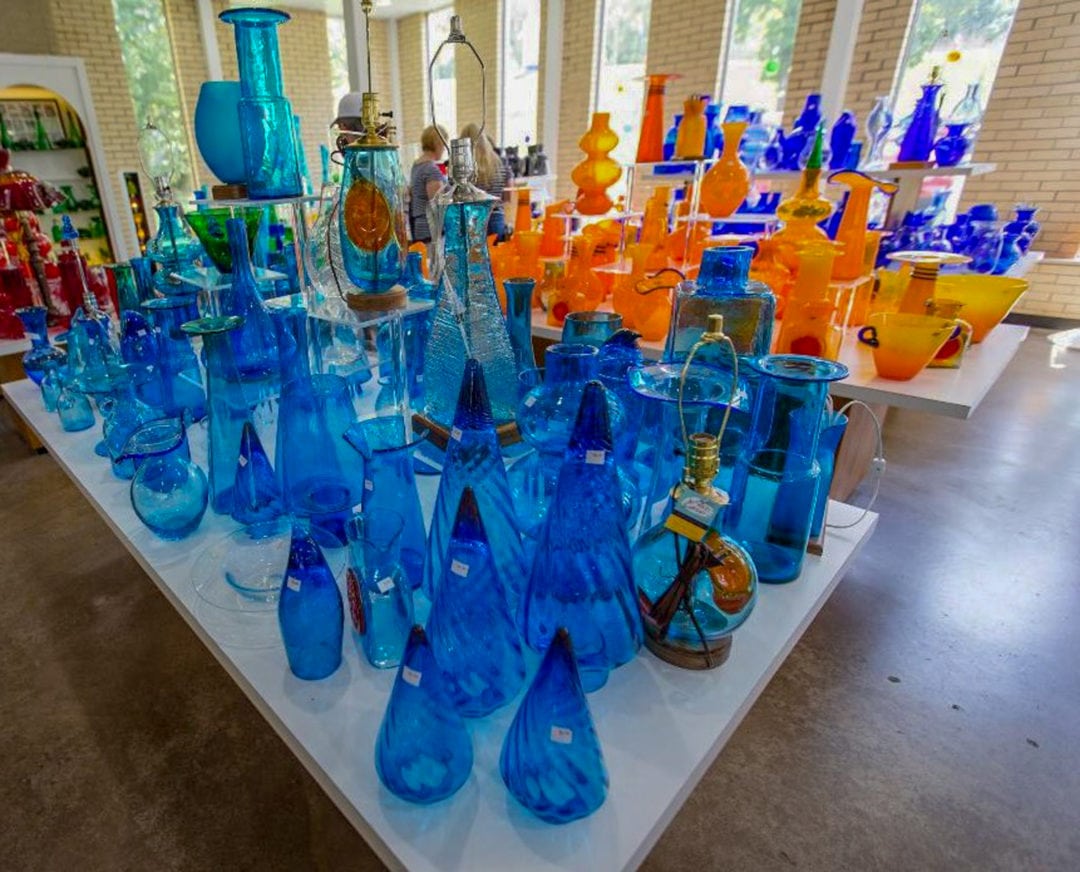
Blenko’s handmade water bottle is by far the glassmaker’s best-selling design. The #384 water bottle—so named because it was the fourth design introduced in 1938—has been produced at Blenko’s Milton factory almost non-stop since its introduction. The bottle—featuring a narrow shape, two pouring spouts, and center indentation—was made to fit into the door shelves of the then-new “electric ice box” (a refrigerator). Over the years, the bottle has been produced in a variety of distinctive colors, and a miniature version was introduced in 2013.
“Today the bottle is as functional and attractive as it was when it was introduced eight decades ago,” Six says.
If you go
The Blenko Glass Company gift shop is open Monday through Saturday from 9 a.m. to 5 p.m. and Sunday from 12 p.m. to 5 p.m. It’s closed on holidays. Self-guided tours of the factory are offered Monday through Friday from 9 a.m. to 12 p.m. and 12:30 p.m. to 2:15 p.m.



